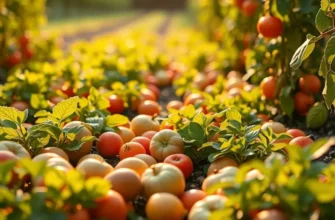Honey, one of the oldest sweeteners known to humanity, has long been associated with myths regarding its shelf life. Many people wonder: does honey really expire? Understanding honey’s unique properties can help clear the air surrounding this question and provide clarity on its longevity, storage, and safety. Let’s explore the fascinating world of honey to find out if its sweetness can stand the test of time.
The Science Behind Honey’s Longevity

Honey has long been celebrated for its remarkable ability to resist spoilage. This unique quality can be attributed to a combination of factors that create an environment hostile to microbes. At the heart of honey’s longevity is its low moisture content. Typical honeys contain less than 20% water, making it hygroscopic. As a hygroscopic substance, honey can absorb moisture from the air, yet its low initial moisture level prevents microbial growth. Microorganisms require water to grow, and the scarcity of free water in honey makes it an unwelcoming environment.
Another key factor is the acidic pH of honey, which typically ranges from 3.2 to 4.5. This acidic environment is inhospitable to most bacteria and mold. The low pH essentially acts as a barrier against spoilage. Honey’s acidity is largely due to gluconic acid, a byproduct of glucose oxidase, an enzyme bees add to honey during its production. This enzyme not only contributes to the acidity but also generates hydrogen peroxide, a mild antiseptic that further deters microbial presence.
Natural preservatives within honey, such as propolis, also play a role. Bees produce propolis from plant resins, and it possesses antimicrobial properties. As bees use propolis to seal the honeycomb, it acts as a protective barrier, safeguarding honey’s purity within the hive.
Historical contexts underline these scientific findings. Honey has been discovered in ancient Egyptian tombs in a perfectly edible state, even after thousands of years. Such archaeological discoveries underscore honey’s unparalleled preservation qualities and its integral role in various cultures as both a food source and a preservative agent.
To better understand how storage techniques also contribute to lengthening honey’s natural durability, you might explore eco-smart kitchen storage solutions here.
Note that while honey’s composition makes spoilage nearly impossible, it is not immune to physical and chemical changes. Over time, honey can crystallize, turning from a syrupy liquid to a more solid form. This crystallization is natural and not a sign of spoilage. It is merely a shift in glucose coming out of the solution. Warmth and gentle reheating can restore crystallized honey to its liquid state.
Understanding the science behind honey’s longevity offers both appreciation for nature’s brilliance and insight into optimal storage practices. By harnessing these properties, the tradition of using honey as a long-lasting sweetener continues to thrive.
Proper Storage and Signs of Spoilage

Properly storing honey is crucial for maintaining its quality and extending its lifespan. Honey should be kept in a cool, dry place to prevent moisture contamination and spoilage. A pantry or cupboard away from direct sunlight is ideal. When storing honey, ensure the container is tightly sealed to keep out air and moisture. Glass jars and food-grade plastic containers are optimal choices as they resist temperature fluctuations better than other materials.
Moisture is the primary enemy of honey preservation. Introducing moisture can lead to fermentation due to honey’s natural affinity for water, deteriorating its quality. Be cautious when using wet utensils to scoop honey, as this can introduce unwanted moisture. Also, avoid storing honey near stoves or other heat sources, as excessive heat can degrade its quality by altering its flavor and aroma.
While honey is remarkably resilient, it can still show signs of spoilage if not stored correctly. Spoilage indicators include changes in color, becoming darker than its original shade, or a shift in texture, becoming excessively runny or hard. The taste might also become sour or fermented. These changes suggest that the honey has undergone some degree of fermentation or degradation and might no longer be suitable for consumption.
Crystallization, a common occurrence, often leads people to mistakenly believe their honey is spoiled. This natural process happens when the glucose in honey precipitates from the supersaturated sugar solution. It does not indicate spoilage; rather, it signifies purity. If you encounter crystallized honey, there is no need to discard it. You can easily restore its liquid form by gently warming the container in a bowl of hot water or at low heat on the stove. Take care to avoid overheating, which can damage the beneficial properties of honey.
For those interested in sustainable and eco-smart kitchen practices, understanding proper honey storage can significantly reduce waste. By taking these steps, you ensure the longevity of your honey and contribute to a more sustainable approach to food storage. For further insights on creating an eco-smart kitchen, you might explore sustainable storage practices.
Knowledge of proper storage and understanding the difference between spoilage and crystallization empowers you to enjoy honey for its intended lifespan. By maintaining optimal storage conditions, you preserve not just honey’s flavor but also its historic role as a cherished natural sweetener.
Final words
In summary, honey is remarkably resilient, thanks to its natural composition that prevents spoilage. In general, if stored properly, honey can remain safe and delicious for an indefinite period, making it a unique pantry staple. While crystallization might alter its appearance, it doesn’t mean the honey has gone bad. Rather, it serves as a testament to its natural qualities. If you practice appropriate storage tips and are aware of how to identify any spoilage signs, you can enjoy this sweet treat for many years to come without worry.








